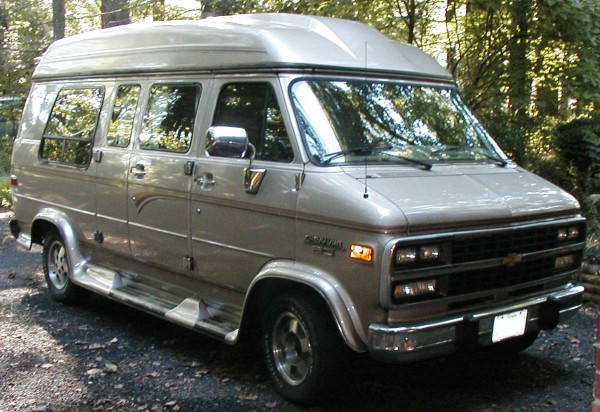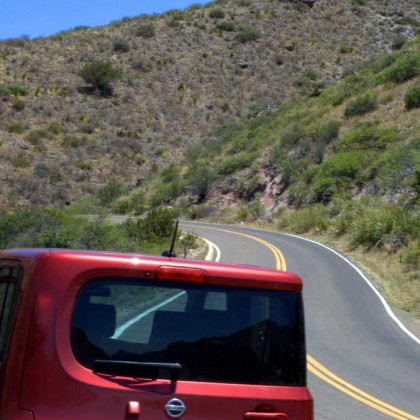Roughly six weeks ago, we went on a spur of the moment trip to Big Bend National Park. On the return visit we started a chain of thought that’s lead us to the decision to radically change our life. We have decided that were paring down our worldly belongings and commitments so that we may live in a sub-250 square foot home that we can travel with.
Inspired by the tiny house movement and the dream of life on the on the road, we’re forging ahead. Labeling all of our possessions into baggies to sell off, planning for the future, and for the first time we are excited about the life we’re choosing. Citizen and I know one thing, and that we want to downsize our life and live on the road.
How does one go about shedding the trappings of city life and get into a state of mobility, and small sized housing? We have some major obstacles to overcome, that we acknowledge will try our resolve for our newly formed dream. Between us we have two vehicles, a small one that can not tow anything, and a large one that is older and on its way out. These vehicles sill need to be traded in, in almost all of these cases. In addition to the vehicle obstacles, we have limited financial means due to trying to live the consumerism lifestyle.
Since the idea first took hold in us during our return trip from our not-so-planned road trip to the desert, we have built up and torn down a number of options.
 1) Attaching a tow hitch to the Nissan cube against the warnings in the manual and towing a lightweight camper
1) Attaching a tow hitch to the Nissan cube against the warnings in the manual and towing a lightweight camper
Research told us that the maximum towing weight would be 2000lbs. Looking all over the internet for a camper at such a low weight showed us that teardrop trailers could be the answer! Most of them were basically a bed on wheels, which is no good for two people who want to be working on laptops the majority of the time, but the T@B RV seemed like a decidedly good option:
Citizen was not quite able to stand up in the unit when we went to look at one, but that didn’t dampen our excitement. This remained plan A for a while while we continued to brainstorm, dream and sketch the design for the life we want. The only problem was that the Nissan cube was an unsuitable vehicle for regular towing of a travel camper, that we were almost certain to bring over weight once we filled it with all of our stuff.
 2) Convert a van into a camper…who hasn’t had a passing fantasy of traveling the country in a VW Bus?
2) Convert a van into a camper…who hasn’t had a passing fantasy of traveling the country in a VW Bus?
Alas, at $20,000 and up for the classic camper bus, and with concerns about maintaining such a vehicle, we looked at other, more affordable van options.

While some were quite nice…for a van, the reality of being unable to stand up inside our home, the rather uncomfortable looking modifications we found out on the internet, and the cost of a relatively new cargo van, we went back to the drawing board.
![By Motorhomes (Own work) [CC-BY-SA-3.0 (http://creativecommons.org/licenses/by-sa/3.0)], via Wikimedia Commons](https://www.cosmicthreads.net/wp-content/uploads/2014/06/Class-Super-C-Motorhomes-Diesel-Class-C-RV-600x337.jpg)
3) Get a class C camper
Now here was an option that would be roomy enough, and potentially affordable? The more we looked at class C campers for sale, the more misgivings we had about them being good viable options for full-time living on the road. The really nice ones were as expensive as a house would normally cost, and the affordable ones may have looked nice inside, but the mileage and age on the cabs raised concerns. We decided at this point that having our home attached to an engine without choosing what kind of vehicle it was, was simply not a good option.

4) Build our own trailer
We didn’t love the floor plans from any pre-existing RV models. They are designed for vacations, when we will need an office/work space in addition to a living space. So much room is wasted on putting a queen bed on ground level – in the class C campers we determined that we would sleep in the small cab loft bed, and tear out the bedroom furniture to make an office – but if we are doing that, why not build from scratch? Neither of us has construction experience, but we did dremel some plexiglas into an infinity door once. But then there was the issue of weight…how much would our creation weigh? We would likely need to get a better towing vehicle if it was going to be bigger than the T@B. This leads us to the current winning plan:
![By MotorCom (Own work) [GFDL (http://www.gnu.org/copyleft/fdl.html) or CC-BY-SA-3.0-2.5-2.0-1.0 (http://creativecommons.org/licenses/by-sa/3.0)], via Wikimedia Commons](https://www.cosmicthreads.net/wp-content/uploads/2014/06/1024px-Pick-Up-Caravan_1-600x401.jpg) 5) Buy a used truck and a used 5th wheel camper, renovate said camper.
5) Buy a used truck and a used 5th wheel camper, renovate said camper.
Looking around on craigslist for trucks suggests that it would be remarkably easy to obtain a vehicle that can tow a camper, especially since we would be trading in two existing cars. Looking at fifth wheel style campers reveals the unimaginative minds of RV floor plan designers, at least where our needs are concerned. We found a 1992 Fleetwood Terry camper for $4000 that had a sofa in the step-up room, bedroom in the back, and kitchen/living area in the middle. The front room miraculously had enough headroom for a sofa, and enough floor space for the office we want. Unfortunately it was over 1000 miles away, so the search for the perfect fifth wheel worth buying a truck for begins…


